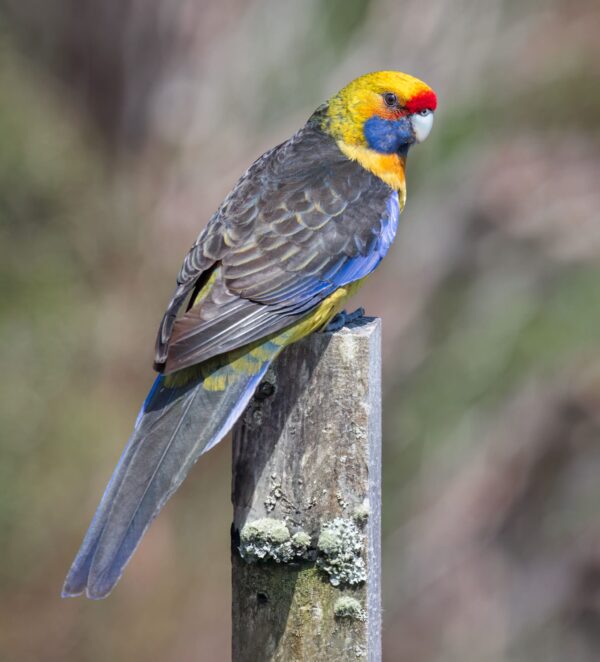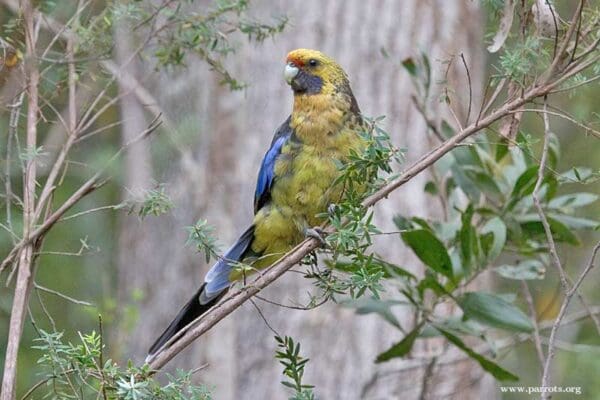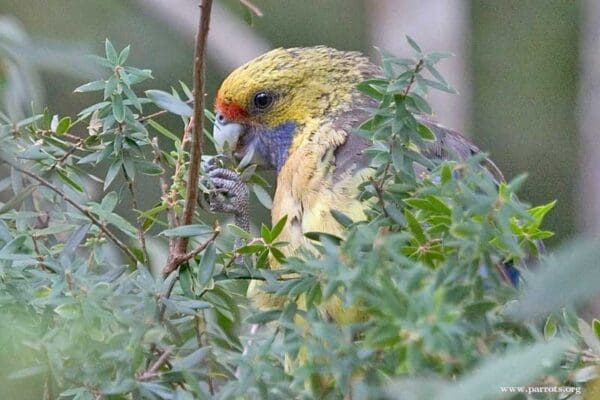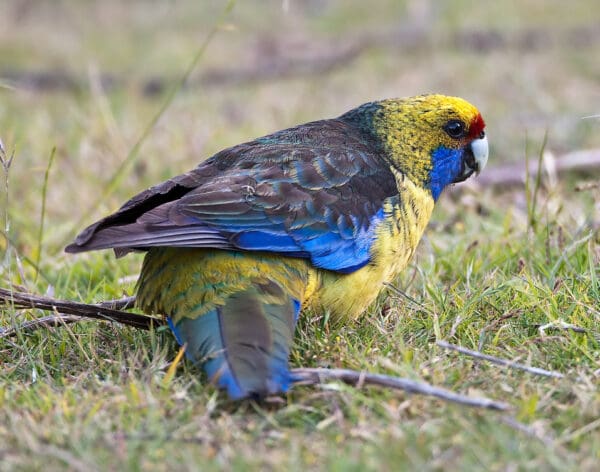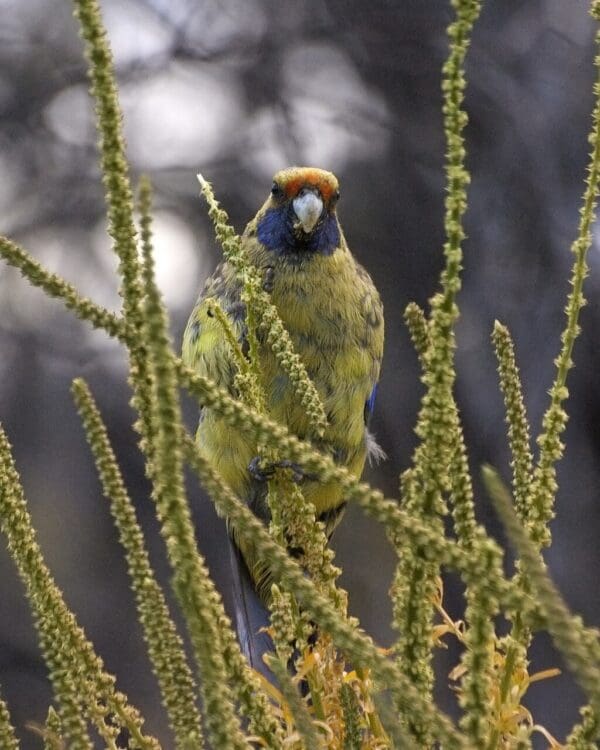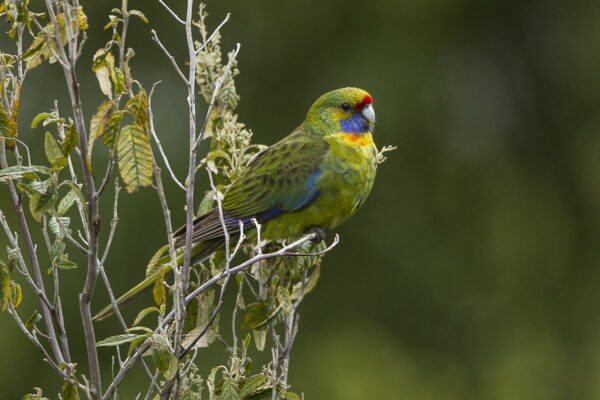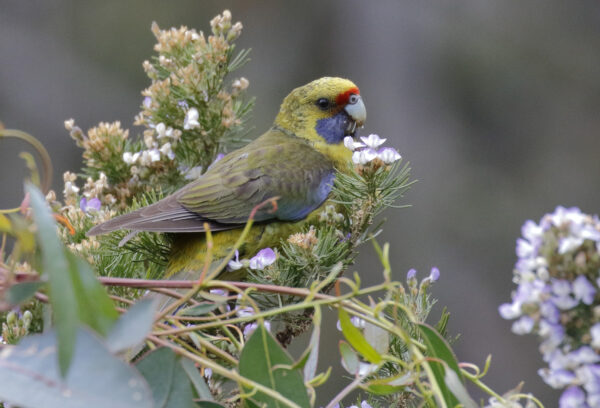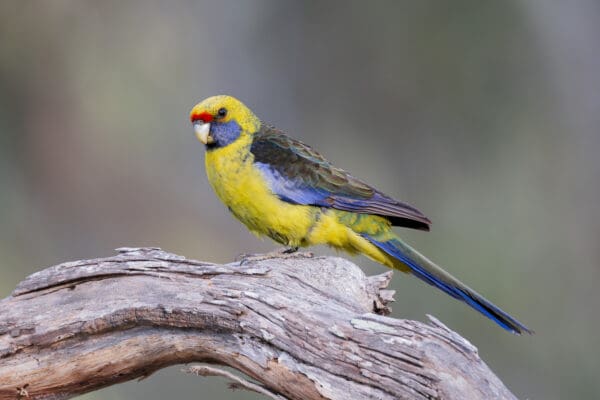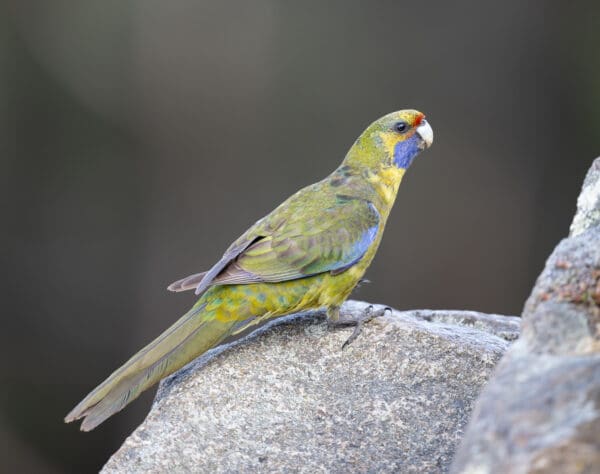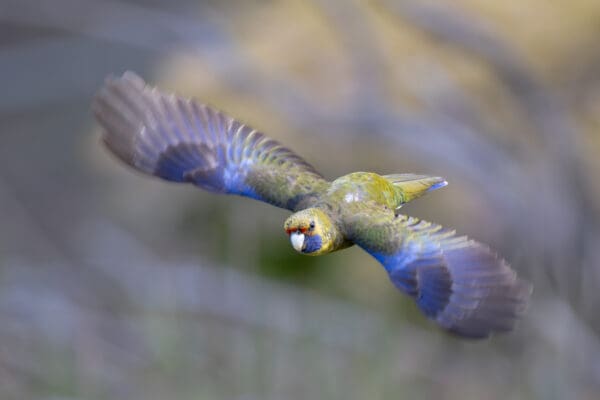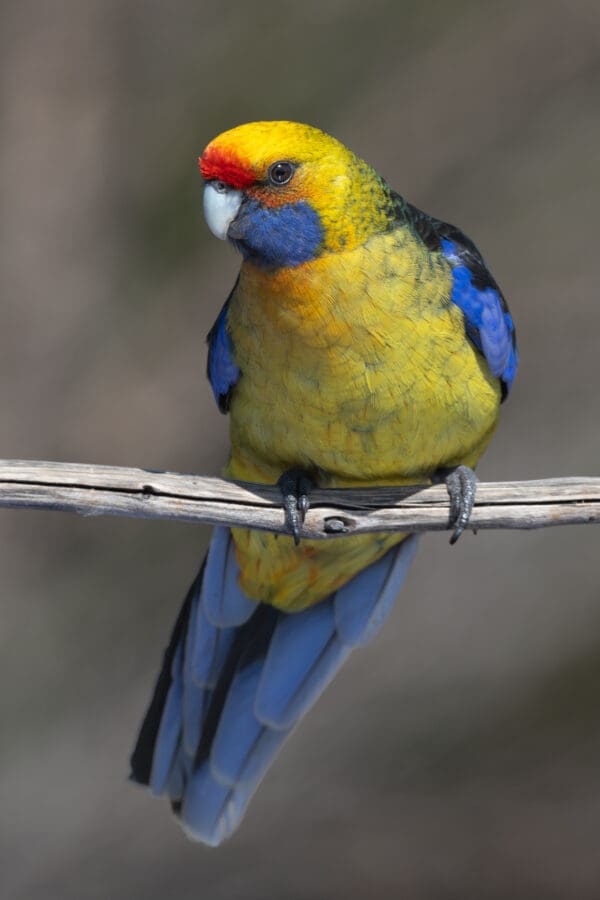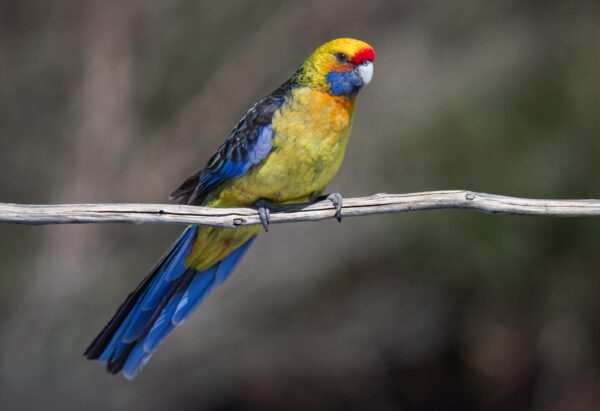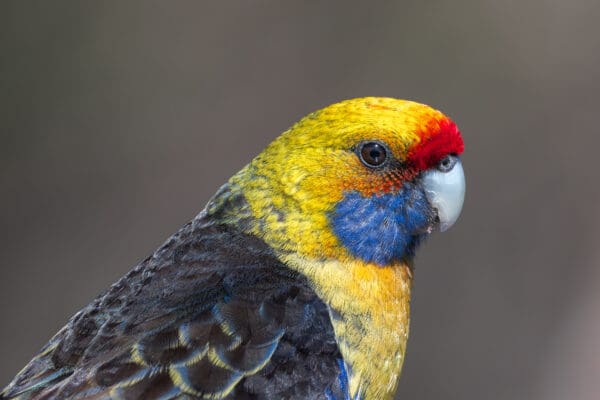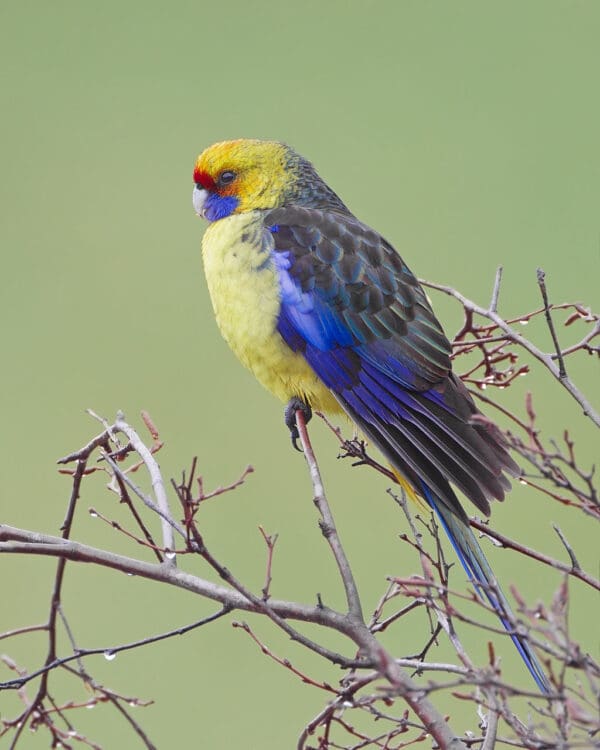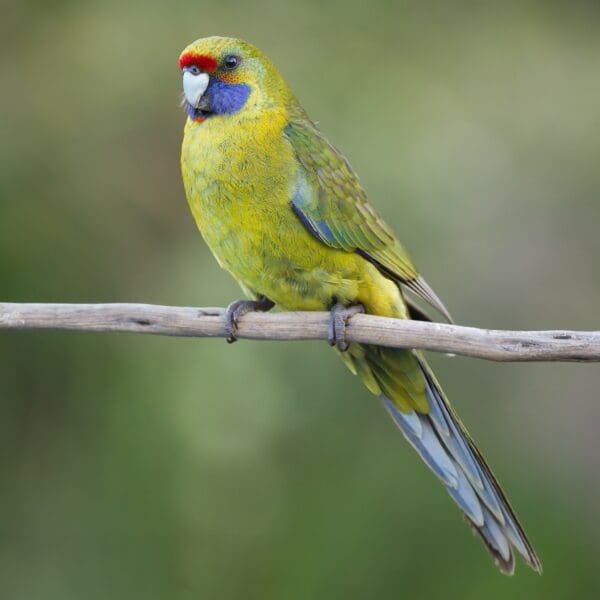Green Rosella
Also known as:
Tasmanian Rosella, Yellow-bellied Parrot or Parakeet, Yellow-breasted Parrot, Green Parrot, Mountain Parrot, Tasman Parrot
Also known as:
Tasmanian Rosella, Yellow-bellied Parrot or Parakeet, Yellow-breasted Parrot, Green Parrot, Mountain Parrot, Tasman Parrot
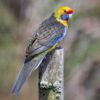
![© Nik Borrow [CC BY-NC 2.0] via Flickr A wild Green Rosella perches on a branch](https://parrots.org/wp-content/uploads/2023/01/wpt_Green-Rosella_1186-9-100x100.jpg)
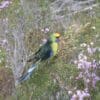
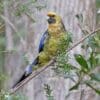
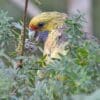

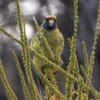
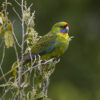
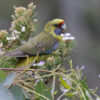
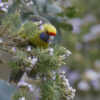
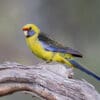
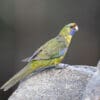
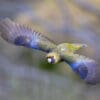
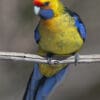
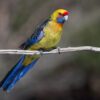
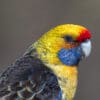

![© JJ Harrison (Own work) [CC BY-SA 3.0] via Wikimedia Commons A wild Green Rosella perches in a tree](https://parrots.org/wp-content/uploads/2023/01/wpt_Green-Rosella_1186-7-100x100.jpg)
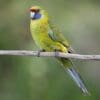
DID YOU KNOW?
The Green Rosella is the largest of the rosellas.

Platycercus

caledonicus
Size:
37 cm (14.4 in)
Weight:
127-142 g (4.4-5 oz)
Subspecies including nominate:
one
Colour Adult:
Male-body yellow/gold; wide red frontal band; purple/blue cheek patches; yellow/gold underparts; mantle and back soft black scalloped dull green; yellow/olive on rump and upper tail coverts; purple/blue on upper wing coverts; tail dull bronze/green widely tipped with blue/white. Beak grey/white. Eye dark brown. Female-as in male but foreneck suffused with orange/red; smaller bill.
Colour Juvenile:
Crown, ear coverts and underparts dull yellow/green; nape to mantle and back olive/green; underwing stripe.
Call:
Contact call disyllabic cussik…cussik…cussik; kwik-kweek…kwik-kweek while perched. Emits shrill shrieks when alarmed.
More Information:
Content Sources:
CITES
BirdLife International
Cornell Lab of Ornithology/Birds of the World
Parrots: A Guide to Parrots of the World, Juniper and Parr, 1998
Article “Experiences with the Tasmanian Rosella in Aviculture,” by Ashley Herrod, Australian Birdkeeper Magazine, Oct-Nov 2004.
Parrots of the World, Forshaw and Cooper, 1977. 2010 edition
Lexicon of Parrots, Thomas Arndt.
Parrots of the World, Forshaw, 2006.
Parrots in Aviculture, Low, 1992.
Captive Status:
Not common
Longevity:
About 10-15 yrs.
Housing:
Walk in aviary, minimum length 4.5 m (14.7 ft).
Diet:
Mix of small seeds such as: canary, oats, safflower, limited sunflower seed; spray millet; sprouted pulses such as mung beans, cooked butterbeans and lentils; green leaves such as: Swiss chard, lettuce, sowthistle, dandelion, chickweed, etc; vegetables such as: carrot, corn, celery, zucchini, green beans and peas in the pod; fresh fruit such as: apple, orange, banana, cactus fruits, pear; nuts such as: walnuts, hazelnuts, pecans and roasted peanuts; seed grasses where available; complete pellet.
Enrichment:
Seeding grasses for foraging; also bathing and access to bird safe wood and wood toys. Melaleuca branches where available.
Nest Box Size:
Vertical box or log 10-12″ (25.4 cm x 30.5 cm) wide x 16-24″ (40.6 cm x 61 cm) long.
Clutch Size:
4 or 5
Fledging Age:
5 weeks
Hatch Weight:
—
Peak Weight:
—
Weaning Weight:
—
World Population:
Unknown but reported to be common. Decreasing.
IUCN Red List Status:
Least Concern
CITES Listing:
Appendix II
Threat Summary:
Not globally threatened. A BirdLife “restricted-range” species. Mainly common throughout its small range. Only on King Island, where Eucalyptus stands have been extensively cleared, has there been a significant reduction in numbers.
Range:
Found in Tasmania and islands in Bass Strait, SE Australia.
Habitat:
Occurs in variety of habitats up to 1500 m (4920 ft). Lowlands, Eucalypt forests, rainforest, montane forest, riverine forest, scrub, roadside hawthorns, orchards, gardens and cleared country.
Wild Diet:
Feeds on seeds of eucalypts, myrtle, sassafras, Acacia dealbata, Senecio linearifolius, Rumex, Solanum, Pimelea and other trees, shrubs and grasses; berries of Coprosma and Cyathodes shrubs, hawthorn Crataegus in winter; leaf-buds of Salix viminalis. Also takes Schedotrioza psyllids and insect larvae.
Ecology and Behaviour:
Found in groups of 4-5 birds, with larger flocks occurring post-breeding. Will associate with the Eastern Rosella. Pairs have strong bond.
Clutch and Egg Size:
4 to 5 rounded eggs, 30.5 x 24.5 mm (1.2 x 0.9 in).
Breeding Season:
September-February; nest is in hollow limb or eucalypt tree cavity, but also in walls of abandoned buildings.
Related Links:
—
